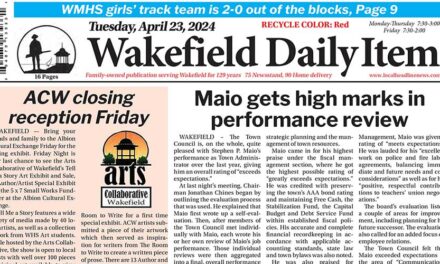Published in the November 5, 2015 edition.
By MARK SARDELLA
WAKEFIELD — A bipartisan state commission’s call this week for an increase of hundreds of millions of dollars annually in state funding for K-12 education found some support among local educators.
“I agree with the Commission’s findings that the formula for the foundation budget, adopted during Education Reform in 1993, is no longer in sync with the reality of today’s costs,” said Wakefield Superintendent of Schools Kim Smith.
According to a story in Tuesday’s Boston Globe, the Foundation Budget Review Commission, established last year, found that the 1993 education reform bill greatly underestimated increases in special education costs and the cost of health insurance. The panel called for an annual infusion of at least $431.8 in additional state funds to make up the difference.
Smith agreed. She indicated that more state financial help in covering the soaring costs of Special Education and health insurance would free up some of Wakefield’s School budget for other needs.
“In particular, the costs of employee health insurance and Special Education are not appropriately accounted for in the existing formula,” Smith said, “resulting in reduced opportunities for school districts to invest in other areas.”
At the 2014 Annual Town Meeting, then superintendent Stephen Zrike convinced voters to approve $330,000 for a School Department Special Education Stabilization Fund to help with unexpected increases in SPED costs.
The Globe story also cited years of cuts to school budgets as contributing to academic achievement gaps and performance disparities between students in wealthy communities and poor communities and between white and minority students.
Last May, Wakefield’s Annual Town Meeting passed a $34,847,085 School Department budget, reflecting $3.5 million (11.4 percent) increase. The unprecedented budget hike was described as an effort to “right-size” a school budget that had suffered from years of cuts and underfunding.
School officials said at the time that the budget increase would address the district’s priority needs by investing in full-day tuition-free kindergarten, updated K-8 math curriculum and K-1 phonics curriculum, increased staffing and technology and appropriate special education funding.
Wakefield officials have for many years been critical of the Chapter 70 formula for distributing state aid to public school districts, maintaining that the formula is outdated and leaves Wakefield lagging behind demographically similar communities in terms of the state aid it receives.
The commission seemed to support those claims of inequities in the formula.
According to the Globe story, the commission didn’t make specific recommendations as to what areas an increase in state education funding should be applied to, but rather suggested giving districts a range of choices.
The Globe quoted several state lawmakers who were recommending a more gradual approach to increasing education funding than the one called for by the commission.
Smith acknowledged that even a phased approach to funding increases would be helpful in addressing SPED and health insurance costs, assuming that the formula was appropriately adjusted.
“I would anticipate that adjustments made in the funding formula to account for these costs,” Smith said, “even if phased in over a number of years, would benefit many school districts, including the Wakefield Public Schools.”




